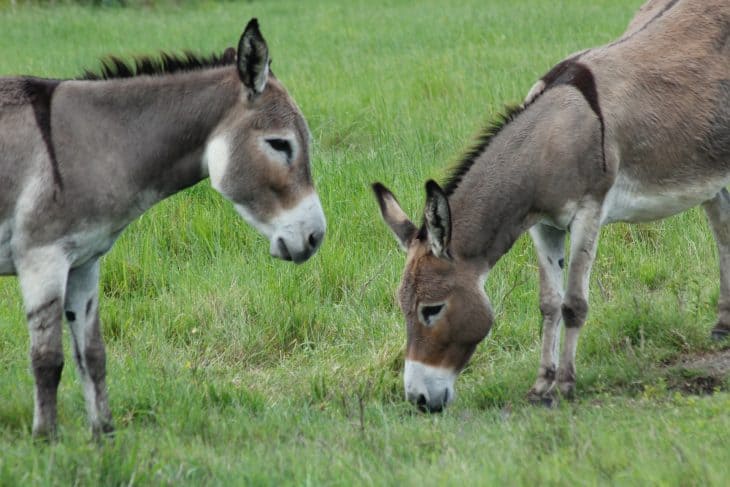
Compared to horses, donkeys are much more of an all-terrain animal. While they are usually seen as inept, these creatures are actually highly intelligent. And they are stronger than horses of the same size! We frequently use the terms “donkey” or “ass” as an insult, but few people realize that donkeys are incredible animals with an excellent memory. So much so, they can recall places they’ve visited or other donkeys they’ve met 25 years ago!
There are more horses on earth (about 58 million) than donkeys (40 million) because there are more people breeding and buying horses for recreation, rather than just for labor. What a lot of people don’t realize is that donkeys, unlike horses, are capable of independent thought and decision-making, ensuring their safety. If they detect something wrong while traveling, they will simply stop and dig in their heels. . This behavior has led to the misconception that donkeys are stubborn when, in fact, they are simply relying on their instincts!
Want to know more? Get ready to ride these amazing 50 donkey facts!
- There are about 40 million donkeys in the world.
- For around 5,000 years, the donkey has been used as a working animal.
- A donkey weighs from 80 to 480 kg (176-1058 lbs).
- At the shoulder, an average donkey stands 101.6 cm (40 in).
- Donkeys can run at a speed of 24 km/h.
- A donkey, also called an ass, is a domesticated horse.
- It belongs to the Equidae family.
- The African wild ass is the ancestor of the donkey.
- A jenny or jennet is a female donkey while a male or ass is a jack.
- The foal is another term for a young donkey.
- A donkey’s color ranges from white to black or gray.
- The scientific name of the donkey is Equus asinus.
- A donkey has large ears with a stiff and short mane on the neck.
- Donkeys have cow-like tails and sharp hooves.
- There are three kinds of donkeys — wild, feral, and domesticated.
- Donkeys have good memories, they can recognize other donkeys they’ve been with and places they’ve gone to.
- Donkeys are regarded as “beasts of burden” or animals used in carrying heavy loads.
- People in the southwestern US use the term burro to describe a small donkey.
- A donkey may have a lifespan of 25 to 30 years and even up to 40 years, with proper care.
- According to research, an average 180 kg donkey can consume around 3 kg of food daily.
A donkey's big ears have different uses.
A donkey’s big ears serve different purposes. Their large ears allow them to hear their herd mates and predators from as far as 60 miles. Donkeys also use their ears to release heat, such as the large space of their ears allow them to expel internal heat and help them maintain a cool temperature.
Donkeys act as protectors of other animals.
The territorial instinct of donkeys is so strong that they sometimes make reliable guards for livestock. Donkeys can easily protect sheep or goats from dogs, coyotes, foxes, or even bobcat that bother them. The livestock assumes donkeys as protectors and when there is danger, livestock move close to them.
Donkeys eat grass and shrubs.
Donkeys normally prefer to eat grass, however, they also eat bushes and desert plants. Rather than tearing the grass immediately with their teeth, donkeys snatch the plant with their lips, pull it in their mouth, then tear it with their front teeth while crushing it down for gulping.
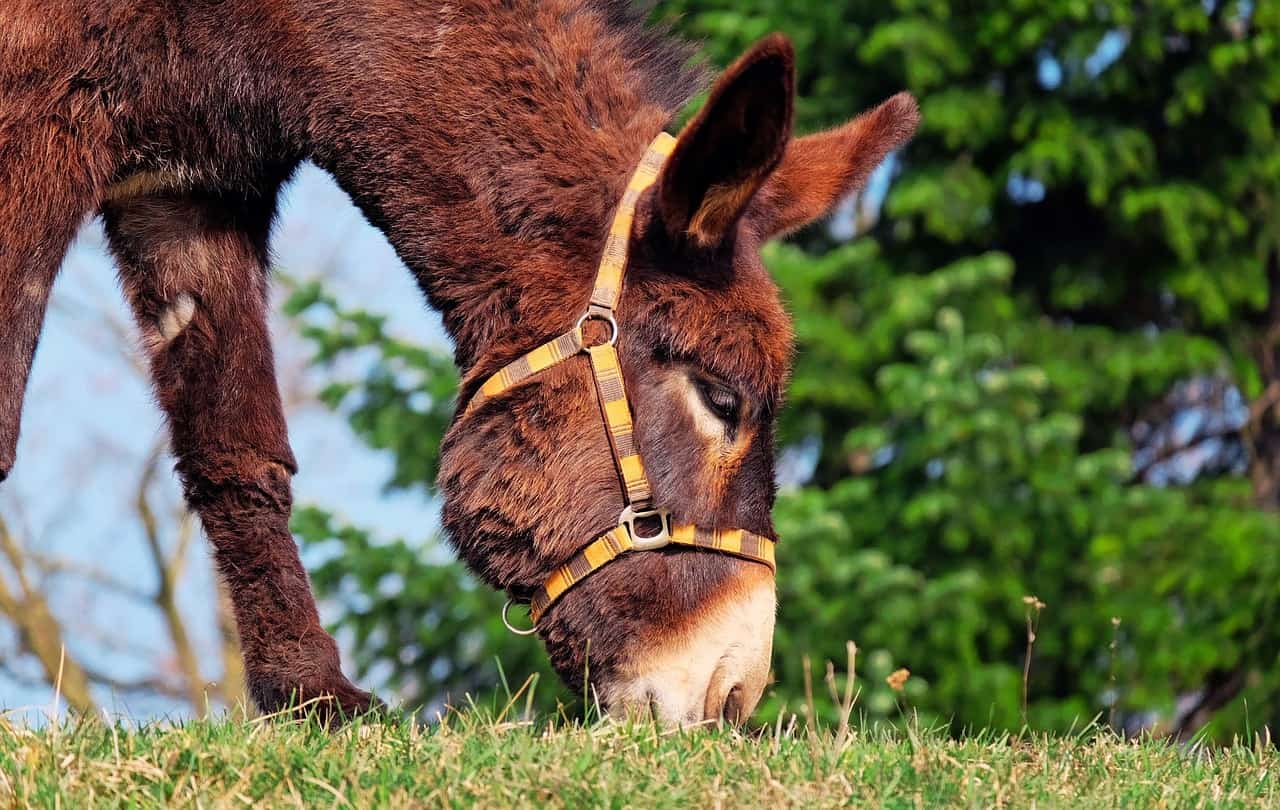
Donkeys tend to be stubborn when they sense danger.
When donkeys detect danger, their reaction is to remain still or freeze and assess the situation. Typically, they will not make any single move until they are to figure out the safest course of action. This reaction makes donkeys look stubborn, especially if the owners do not see or recognize the danger that makes them worried.
Braying is the sound donkeys make.
Bray is the loud, harsh sound of a donkey. There are different reasons why donkeys bray; they could be lonely; calling for a friend or companion; excited about something; or they may be expecting food, for they have a pretty reliable body clock in their stomachs.
Donkeys are versatile animals.
Donkeys are versatile animals and can have many uses such as light draught work, companion animals, for children and lightweight people to ride on, or simply as pets. Generally, a regular donkey could possibly carry as much as 125 lbs or 56 kg.
Donkeys have terms for male and female.
A male ass or donkey is called a “jack,” and a young donkey is a “foal,” while the female donkey is a “jenny,” or also known as “jennet.” Moreover, although donkeys are known for being territorial by nature, female donkeys or jennies are frequently less territorial than jacks.
Jacks and jennies kick in a different style.
Male donkeys tend to use their front ends to attack or defend themselves, while jennies like to turn and kick out using their hind legs. Even though coyotes often view donkeys as food, donkeys can be fierce and tough enough to scare them away. In fact, a donkey can stomp or kick a coyote to death.
They can have up to 44 teeth.
Depending on their age and gender, donkeys may have up to 16 to 44 teeth along with small non-functional wolf teeth. A wolf tooth is a tiny peg-like tooth located in front of the first cheek tooth on each side of the mouth on both the upper and lower jaw of the donkeys.
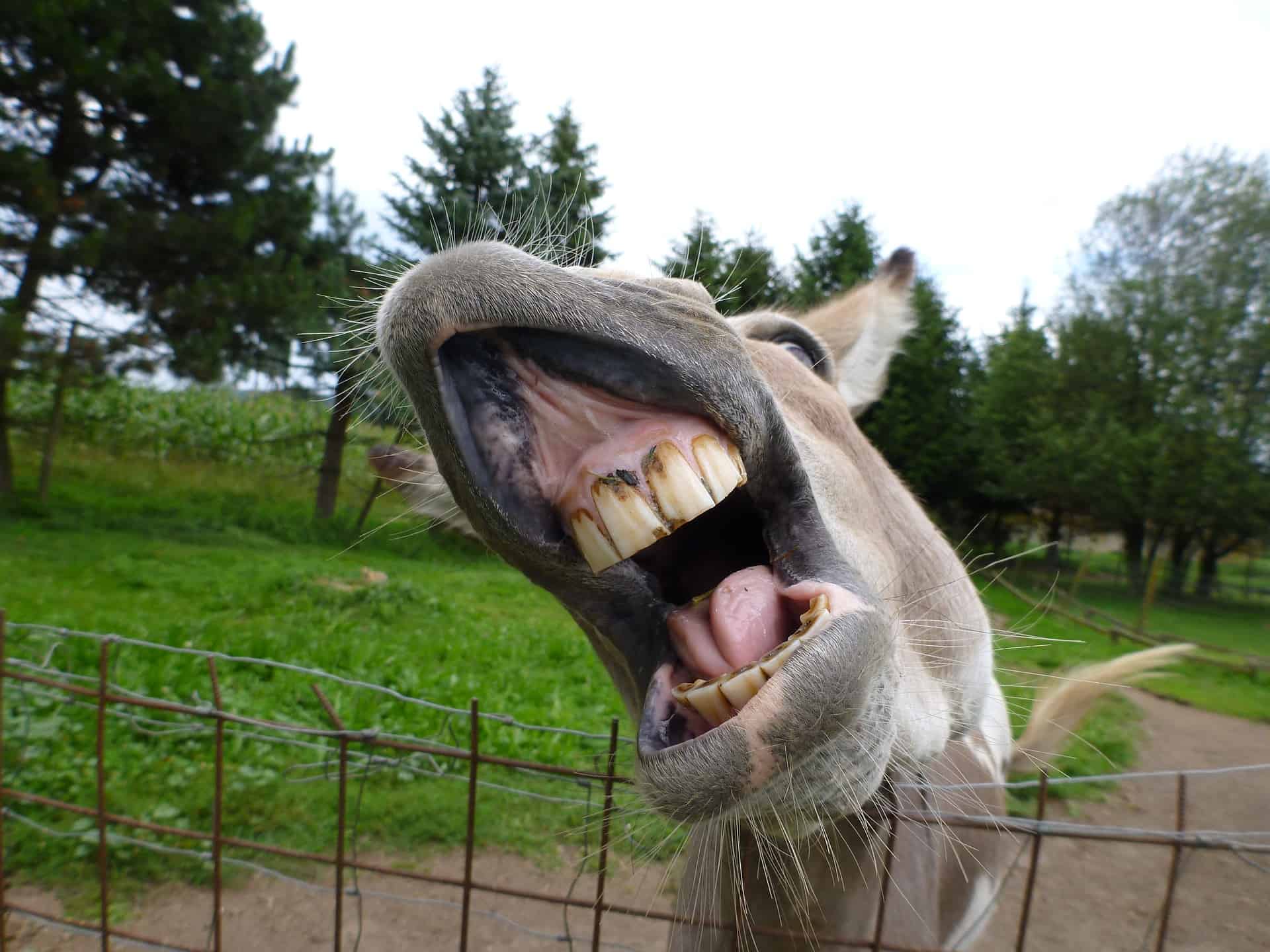
Dental check-ups are essential for pet donkeys.
If you own or have a pet donkey, it’s advisable for young donkeys to have the vet check their teeth at least twice a year until they grow or fully develop their adult teeth. And once they reach maturity or adulthood, it’s still best to schedule them for a dental check-up once or twice a year, depending on the condition of their teeth.
Donkeys have two sets of teeth in their lifetime.
The first set is called deciduous teeth, which erupt in the first few weeks of their life. In time, the deciduous teeth will gradually fall out and the permanent set of adult teeth will replace it. Moreover, because of the long-duration feeding pattern of donkeys and abrasive roughage, their teeth continually grow to support the constant wear. Thus, a veterinarian or a trained Equine Dental Technician needs to monitor its status.
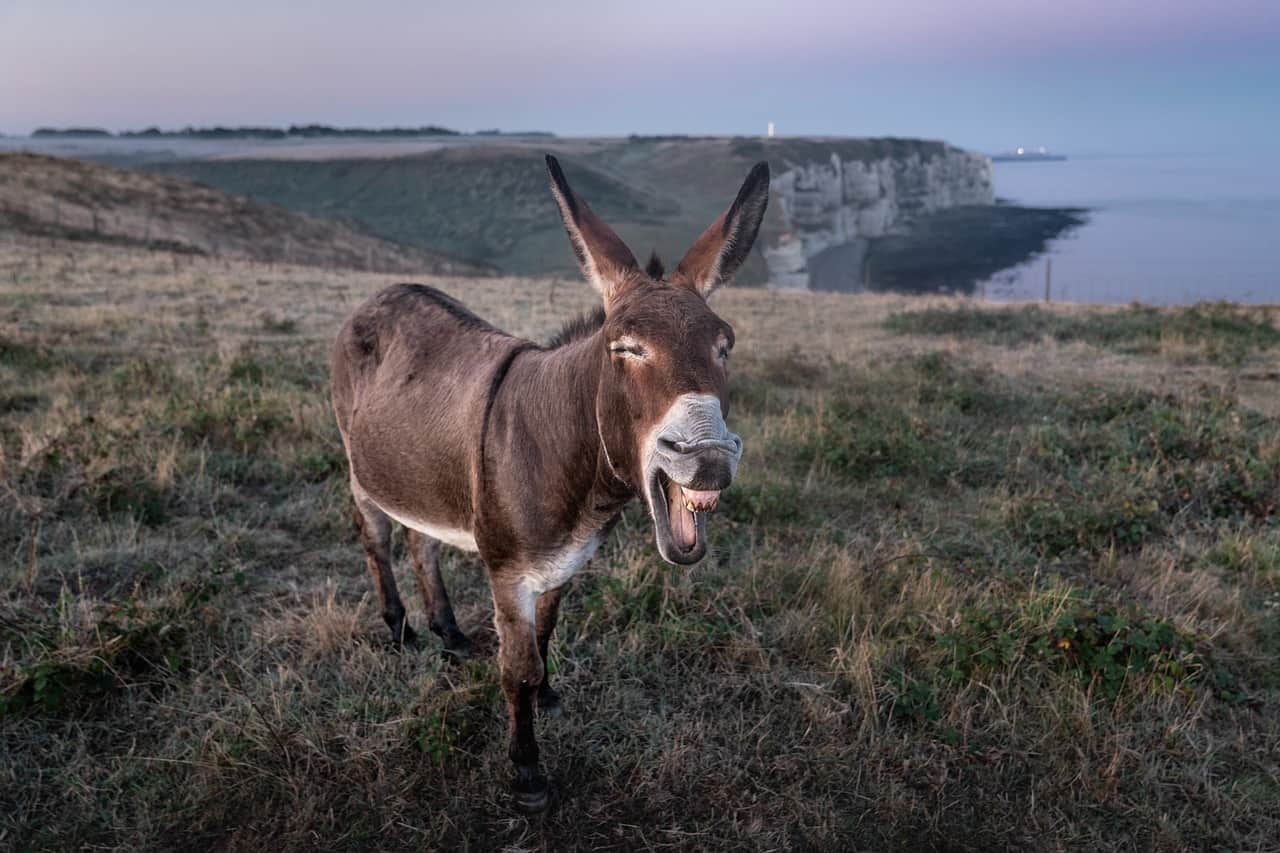
Jennies have their own behavior issues.
Female donkeys or jennies have their own unique behavior issues. Usually, it is due to the changes in hormone levels during their estrus cycle. Jennies commonly come into season from 18 to 24 days, and during this cycle, they can have days when their behavior is either very friendly, normal, or unpredictable.
Owners should have sympathy for their jennies.
Having a jenny as a pet will require patience and sympathy from its owner, as managing them during hormonal fluctuations is crucial. To better predict or forecast these hormonal fluctuations, owners may want to ask for help from experts and log the female’s behavior consistently to confirm the normal cycle.
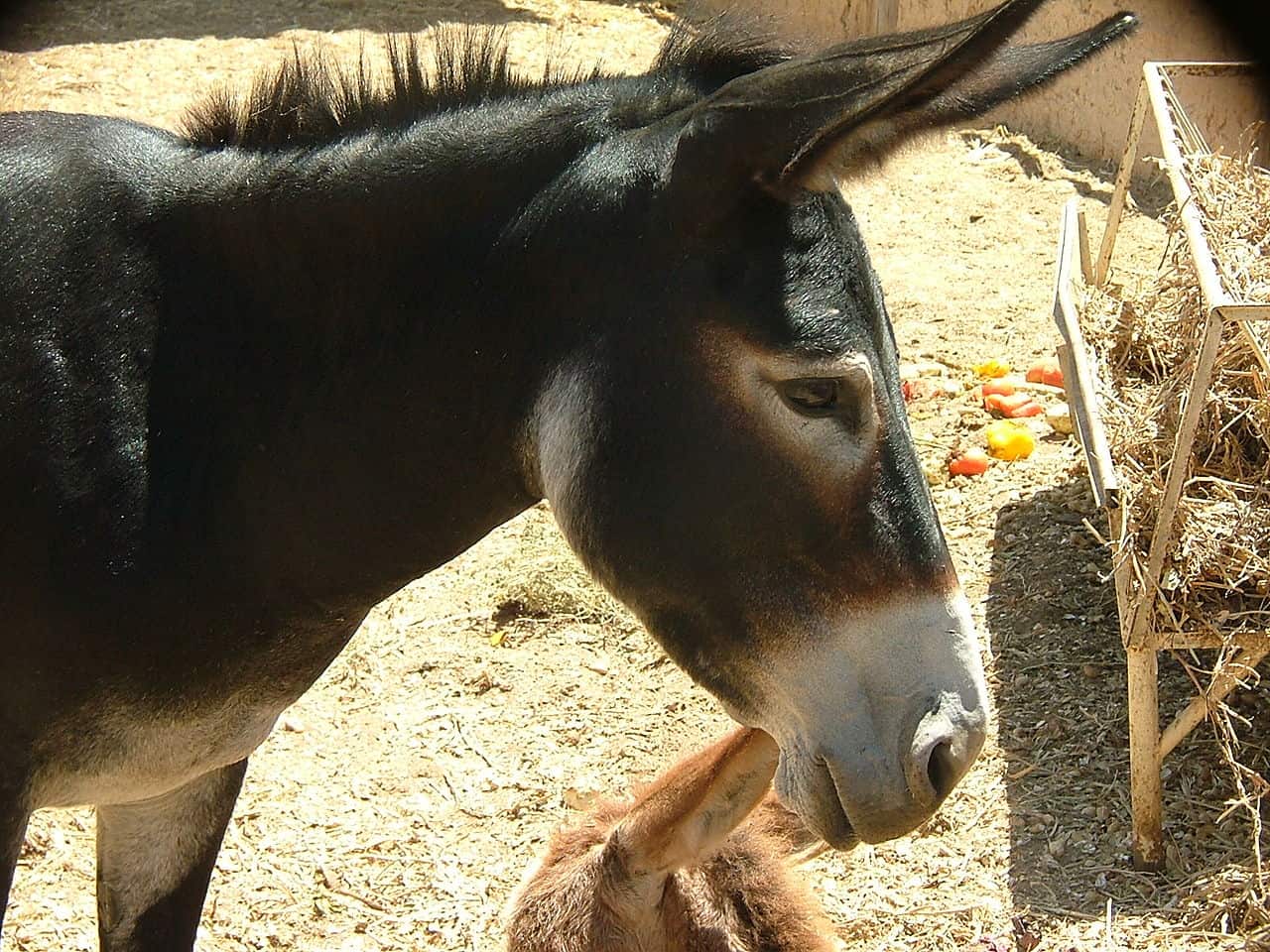
Some female donkeys are unaffected by behavior issues.
Although most jennies undergo “behavior issues” during estrus cycles, some jennies show no signs of being “in season” and their behavior will remain steady throughout the cycle.
Jennies are subject to reproductive medical conditions.
Apart from estrus cycles, medical conditions that can affect the female reproductive organs can also lead to unpredictable behavior in female donkeys. Likewise, a vet should always be consulted if such problems are suspected.
Their characteristic is a little different from horses.
In contrast to horses, donkeys are not easily startled and they have a strong sense of curiosity. Moreover, they are more independent in their thinking than horses, and their decisions will be based on their safety. Physically, the difference between a horse and a donkey is that the donkey’s backs are flatter, they have smaller hoofs, and have longer and thicker ears than horses.
Actions and words are effective in training your donkey.
Shaping and training your donkeys rely upon showing your jacks or jennies through actions and words. Most importantly, owners should make them feel that they are protected from any danger. Eventually, donkeys will learn what their owner wants them to do if they take time to show them.
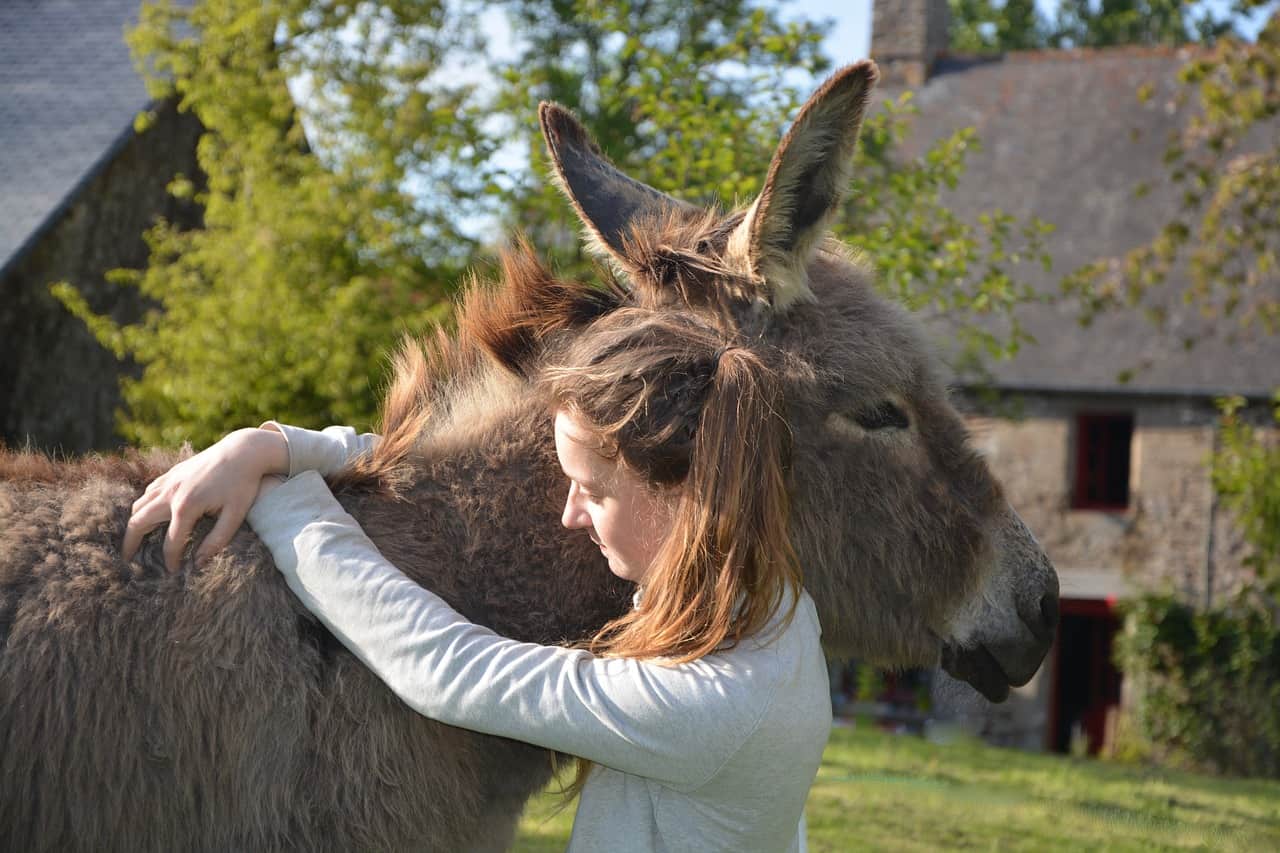
A donkey's waste has nutrients closely similar to horses.
For wild donkeys in the desert where food is scarce, they utilize more than 90% of what they eat, which means their manure is not the most ideal fertilizer for the land. Nevertheless, some people are known to use their manure (especially those of commercial donkeys) as fertilizer for their gardens. Donkey waste has nutrients and chemical composition closely similar to horses, and it’s a relatively inexpensive fertilizer for plants.
Donkey manure takes around four months to decompose.
Generally, donkey manure takes around three to four months to decompose. A donkey’s and horse’s manures are known to provide a step up in nutrient levels due to their diet, along with commercial supplements. These are also suitable for flowerbeds and vegetables. Nonetheless, chicken manure is still the king in this area and usually has the highest nutrient content because of the absolute nature of a chicken’s diet.
Donkeys don’t like rainy places.
Donkeys don’t like the rain. Being exposed to it for long periods of time can ruin their health since their fur is not waterproof. According to a study, donkeys would try to hide from rain compared to horses which means that donkeys are quite suited to hotter, drier climates, while the horse is most likely to adapt to temperate climates.
Donkeys helped the Egyptians get wealth.
Most of the wealth of the early Egyptians was heavily influenced by precious metals carried from Africa by donkeys. According to studies, the first captivity of the wild ass was in Egypt which went back as early as 2,800 B.C. And around 1,000 B.C., donkeys became mainstream as they became a common means of transport through Egypt, Asia, and certain parts of Europe.
Dionysius is famous for his donkey.
Here are some donkey facts for Greek mythology enthusiasts. The god of Wine, Dionysius is famous for his donkey and other sacred animals including the goat, lion, leopard, serpent, and bull. Dionysius is the son of Zeus and Semele and the patron god of wine, drunkenness, reincarnation, and agriculture.
Some countries continue to rely on donkeys.
Until this day, donkeys continue to be the lifeline to some families in many places of the world. Trained donkeys help their owners with wood and water collection, land cultivation, and transportation of produce to market. Some underdeveloped countries that are living below subsistence levels use them as draught or pack animals.

Donkey burger is popular in northeastern China.
Going back to the 15th century of China’s Ming Dynasty, a more affordable substitute for horse meat was donkey meat. Today, in Baoding and Hejian, Hebei Province of China, donkey burger is a local specialty in which other parts of the country, particularly in northeastern China, also enjoy. Donkey burger is both a popular street food and a staple part of menus in high-end restaurants.
Italy has the highest consumption record of equine meat in Europe.
Each year, more than 2 million donkeys are slaughtered for meat worldwide. In some parts of Europe, donkey meat creates a notable part of culinary traditions. Italy has the highest consumption record of equine meat in Europe, and donkey meat is one of the main ingredients of several regional dishes.
Donkey meat can be tough with a strong smell.
The donkey meat is known to be tough and with a strong smell. Despite that, many say that the meat is tender, sweet, and delicious. As a rule of thumb, if a donkey, horse, or even moose had a cow-like diet and lifestyle, their meat will taste relatively similar to beef.
Pope Gregory asked the people to stop the consumption of equine meat.
Pope Gregory III started to make an effort and asked the people to stop the consumption of equine meat in 732 AD. To some countries, this movement by the Roman Catholic Church spread, and equine meat grew from being taboos, to avoidance, and then to abhorrence. Although according to a study, the avoidance of equine meat in the United States culture is not likely because of the Pope’s prohibition, but because of its unfamiliarity with the meat. Thus, the country does not generally consume it.
Humans have been using donkey milk since ancient times.
Donkey milk or also known as ass milk or jenny milk is the milk derived from domesticated donkeys. Since Egyptian antiquity, humans used donkey milk for cosmetic purposes, alimentary, and infant nutrition. The Greek physician, Hippocrates, was the first to record the medicinal use of donkey milk. He prescribed it for various conditions including fever, poisoning, liver problems, infectious diseases, edema, healing wounds, and nose bleeds.
Donkey milk has only 49 calories per 100 milliliters.
Donkey milk is rich in carbs and low in fat. Moreover, the protein in donkey milk is largely whey, which can help prevent the growth of some bacteria and viruses. Compared to human breast milk which has 70 calories per 100 ml and vitamin D-fortified cow’s milk that has 61 calories, donkey milk only has 49 calories.
Donkey is Shrek's chatterbox best friend donkey.
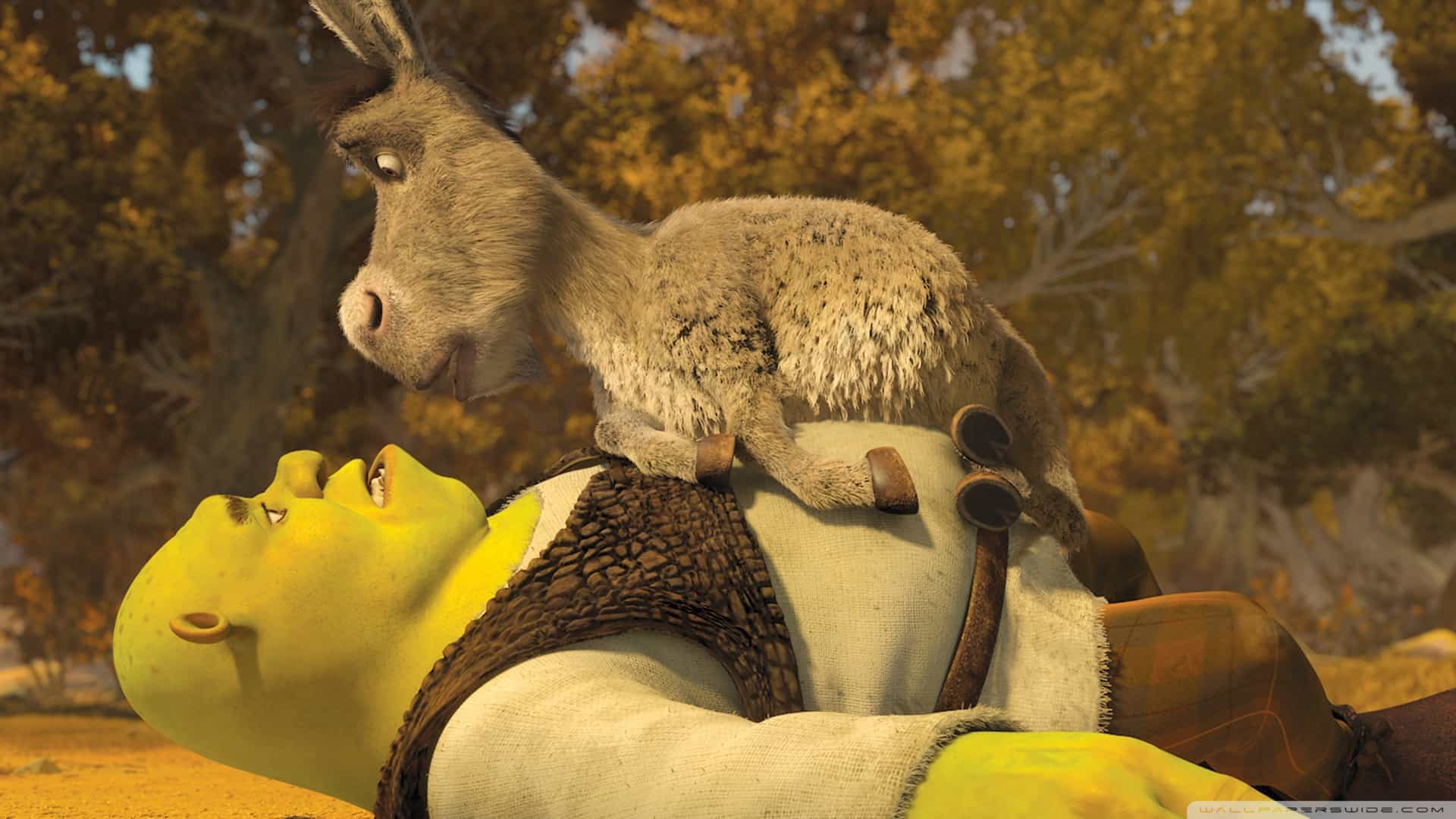
Donkey is the talkative and flighty sidekick of Shrek. A huge part of the character’s success in real life lies behind his voice actor, Eddie Murphy. He might be called simply as “Donkey” but the character is known by almost everyone! The power of the voice actor and the character design itself lead to some people immediately recognizing Eddie Murphy!
Was this page helpful?
Our commitment to delivering trustworthy and engaging content is at the heart of what we do. Each fact on our site is contributed by real users like you, bringing a wealth of diverse insights and information. To ensure the highest standards of accuracy and reliability, our dedicated editors meticulously review each submission. This process guarantees that the facts we share are not only fascinating but also credible. Trust in our commitment to quality and authenticity as you explore and learn with us.
